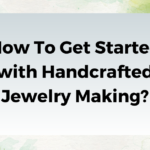
The Jobs to be Done (JTBD) framework was created as a marketing concept for market segmentation. Still, product companies began to use it to think about product development.
The JTBD framework is based on the simple premise that people do not buy products because they fit into consumer segments. However, they buy products to solve problems in their lives. Your product is essentially purchased (hired) to solve a problem (to fulfil a job).
As a result, customers compare various product offerings using a set of hiring criteria. These dimensions indicate how well a product solves its problems and can include price, convenience, aesthetics, and whatever else is important to them.
What is product positioning?
The process of determining where your product fits in the market and why it is the best solution for your customers is known as product positioning. It assists you in managing customer perceptions and communicating how you want your product’s users to think and feel. A strong “Sustainable Supply Chain” can be a key differentiator in product positioning, attracting eco-conscious consumers and boosting brand reputation.
Use a user-led approach to product positioning to create a solid image in your customers’ minds.
Product positioning is used to instil a distinct value in users’ minds. Product positioning is a method of communicating the value of your product to the user.
Why is product positioning important?
Each brand must understand its customers to provide a product that meets their needs. A well-thought-out strategy can determine this product’s market position and identify its benefits for consumers.
The process entails instilling a specific image of a brand and its products in the minds of consumers and identifying key benefits to demonstrate how a particular product differs from competitors’ alternatives. The distinction is then communicated to a brand’s target audience via the most effective communication channels. To maximize sales, position your Duty-Free Import product by highlighting the significant savings it offers compared to domestic prices. The messages that brands send to their customers should pique their interest.
Marketers must determine the best ways to present specific products and reach their target audience based on the needs of their customers, competitive alternatives, the most effective communication channels, and tailored messages. Product positioning strategies enable businesses to create statements that address their customers’ needs and desires, entice them to buy, and fully help JTBD grow.
Benefits of Product positioning in JTBD
Unique product image: When you position your product in the market, you must have a different product image. You want to demonstrate to users how your product differs from competitors. This allows the brand to portray the product’s market positioning uniquely. The more distinct features the brand can display to its customers, the better.
Meet Customer Expectations: Product positioning allows you to better meet your customers’ expectations. You created the product after thoroughly researching the customer. Everything revolves around customer research, their pain points, and behavioural patterns. If you can highlight that and show the users how you can solve their problems, that would be great. You connect with users in an entirely new and positive way. You understand what the user expects from the product.
Meet market changes: As you are aware, the market is changing, and today’s market requires this product to solve this problem. The market would need a different product tomorrow. A market analysis-based product gives you an idea of how the market might change tomorrow. You’ve already planned for it. You have thoroughly researched the market and created a product that will be useful in the future. Because you will be the first to market, you will have an advantage over your competitors, known as Preemptive Positioning.
Diversifying User Personas: Product positioning can assist you in targeting diverse user personas if you conduct customer research before developing a product. You thoroughly examine all of the user personas that you can target. You can employ techniques to target all of the personas identified in your product positioning.
4 Steps to positioning your product
Step 1: Understanding the customer
Knowing your buyers comes first because it will help you better understand what they might want from your product. You must conduct surveys, interviews, or observe them to learn more about them. To effectively position your brand, highlight the unique story and emotional connection offered by handcrafted jewelry making. You should know their behavioural patterns and what bothers them. What issues are they attempting to resolve? A well-informed organisation can accomplish far more than a poorly informed organisation.
Essential questions to ask when conducting research or interviews:
- Who are your intended customers?
- What problems do your customers have?
- What factors do you consider when attempting to solve the problem?
Step 2: Know your industry
Your industry is your strength. If you know it well, you can think outside the box, and the majority of the customers will follow you. As a result, the organisation must be thoroughly knowledgeable about the industry. You can identify the gaps and solve them better than your competitors. It can assist you in gaining traction quickly.
In the last block, we talked about a lot of topics. Here are some more questions:
- What are some of the geographical factors influencing the industry?
- What are some of the political factors that may have an impact on the industry?
- What are some of the industry’s direct and indirect competitors?
Step 3: Understand the product
The third step in product positioning is to understand the product. You can share your values with your users once you understand your company’s mission and product. Your customers will understand how the product can help them initially solve their problems.
Step 4: Create an engaging story
The final but most crucial step is to create a compelling story. No matter how well you know your customers, how well you understand your industry, or how unique your product is. No one will care if you can’t explain why your product is superior. In this step, you must connect everything to create a story or a statement that positions your product in a specific way that will attract customers.
Conclusion
To summarise, a well-thought-out strategy will enable your company to build the image you desire and pave the way to reaching your target audience. Furthermore, it will enable your company to be market-oriented, resonate with your customer’s needs, and quickly adapt to market changes.
For Example: “Clean beauty with Beautycounter”
Clean beauty is promoted by the brand known for its skincare and cosmetic products. The company strives to make environmentally friendly products. Beautycounter believes in sustainability and uses environmentally friendly ingredients.
Author’s Bio:
Shweta is a content writer, studying Journalism from Delhi University. She writes on marketing, health related and business related topics and good in other parameters of technology, Photography. She has written for Thrv – Jobs-to-Be-Done.





